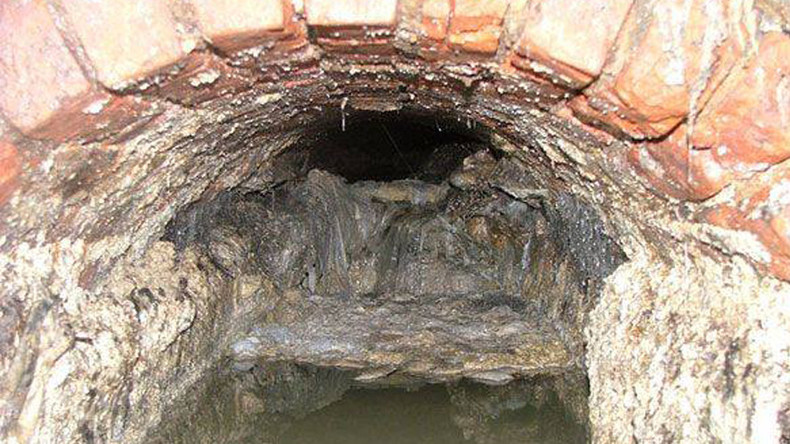
I should have posted this one on Thanksgiving Day.
In mid-October, workers at a wastewater treatment plant near Charleston began to notice that the water levels were rising fast. They suspected a blockage, and expected the culprit to be a mass of waterlogged wipes. To be sure—and to get it out—they dispatched a team of divers.
A three-person crew pulled on steel-toe boots, three pairs of gloves, and full-body suits (including metal helmets with sealed oxygen hoses), and rode a cage 80 feet down into the wet well, or holding tank. There, they felt their way through raw sewage. “You can’t send a camera down, because there’s zero visibility no matter how much light you bring down; it’s filled with particulate matter,” says Mike Saia, communications manager at the Charleston Water System. This diving company has been inspecting the area’s pipes for at least two decades. Saia says the divers know the topography by touch. They stuffed the cage full of the fetid stuff, and then returned to the surface. “Those people really are heroes,” he says.
Eeew.
Meet the Fatbergs, by Jessica Leigh Hester (Atlas Obscura)
Digging into the science of three cities’ sewer-clogging blobs.
Wherever they’re found, fatbergs—giant mounds of fats, oils, and debris that accumulate in sewers—have many things in common. Stinky, sprawling, subterranean, they start small, then get bigger and bigger, and sometimes grow to gargantuan proportions, occasionally surpassing a double-decker bus or even an airliner in size. They tend to lurk, unnoticed, until they claim so much of a pipe that wastewater can hardly flow past them. Then, they’re investigated and hauled to the surface bit by bit, where they elicit fascination and no small measure of nausea.
They also usually form in the same ways. “Saponified solids are the major pathways to these hardened deposits,” says Joel Ducoste, an environmental engineer at North Carolina State University who studies underground accumulations of fats, oils, and grease (otherwise known as “FOG”). “You’ve got reactions with calcium that can come from the background wastewater, or from corrosion of concrete-like materials that releases calcium and reacts with fat and grease that has broken down to release saturated and unsaturated fatty acids,” Ducoste says. These deposits build up on the sides of the pipes, like plaque narrowing an artery.
The clogs appear all over the world, wherever fats and oils go down the drain, wherever people bathe, wherever we flush things that ought to go in the trash. Cities have been battling gunked-up pipes ever since they began to snake beneath the streets …











